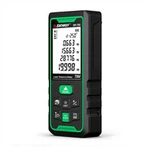What is the difference between a rechargeable pH electrode and a non-rechargeable pH electrode?
The pH composite electrode shell is divided into plastic and glass. The rechargeable pH composite electrode has a liquid filling hole on the electrode shell. When the external reference solution of the electrode is lost, the liquid filling hole can be opened and the KCl solution can be replenished. The non-rechargeable pH composite electrode is filled with gel KCl, which is not easy to drain and has no liquid hole.
The characteristics of the rechargeable pH composite electrode are that the reference solution has a high penetration rate, the liquid junction potential is stably reproduced, and the measurement accuracy is high. And when the reference electrode is reduced or contaminated, the KCl solution can be replenished or replaced, but the disadvantage is that it is more troublesome to use. When using the rechargeable pH composite electrode, the liquid filling hole should be opened to increase the liquid pressure and accelerate the electrode response. When the dielectric liquid level is 2 cm below the liquid filling hole, new dielectric liquid should be added in time.
Non-rechargeable pH composite electrodes are characterized by simple maintenance and easy use, so they are also widely used. However, when used as a laboratory pH electrode, under long-term and continuous use conditions, the KCl concentration at the liquid junction will decrease, affecting the test accuracy. Therefore, when the non-rechargeable pH composite electrode is not in use, it should be immersed in the electrode soaking solution, so that the electrode performance will be very good the next time it is tested. However, some laboratory pH electrodes are not suitable for long-term and continuous testing. Therefore, this structure The impact on accuracy is relatively small. The industrial pH composite electrode has relatively low requirements for test accuracy, so its ease of use has become the main choice.






